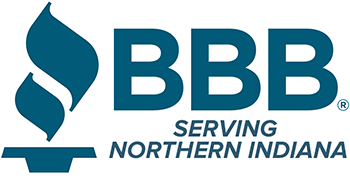1. RESPOND TO EVERY NEGATIVE AND POSITIVE REVIEW!
Demonstrate your commitment to your prospects and customers by making sure their voices are heard. This shows your dedication to improving their experience and shows appreciation for their feedback.
2. REACT AND RESPOND APPROPRIATELY
When you do respond, make sure you do so with poise and dignity. Remember, there’s never an appropriate time for a heated moment. So, take the time to react and craft a thoughtful, constructive response.
RELATED CONTENT: HOW TO RESPOND TO REVIEWS INFOGRAPHIC
3. TURN CRITICISM INTO AN OPPORTUNITY
Use this feedback as an opportunity to dig deeper into what went wrong and examine how issues can be rectified. Are there gaps in your product or service that negatively impact the user experience and could cost you a customer? Share these insights with your ops team to see where, when and how your solutions can be added into the next phase of the product.
4. USE AS COMPETITIVE LEARNING
Prospects and customers are constantly comparing you to your competitors. Use your own negative reviews to see where your competitors excel. And vice versa: Use the negative reviews of your competitors to see where you gain a competitive advantage.
5. RE-ENGAGE LOST CUSTOMERS
Regardless of why you have lost clients, use negative reviews (and your response to these reviews) to re-engage past customers. Reply to negative reviews with what is on the roadmap, and confirm that you are making changes based on customer feedback. You may address a previous pain point that you are now overcoming, and you’ll demonstrate to your lost clients that your company cares about what customers want — you’re worth another look!
6. CREATE A LIFELONG BRAND ADVOCATE
Show your customers you listened. As product updates occur, or issues mentioned in negative reviews are rectified, let your customers know. The best way to respond to a negative review after the problem is solved is by stating that fact, and asking for an updated review. Create a brand advocate and demonstrate your customer-first mentality.
7. BE TRANSPARENT
Contrary to what most people think about negative reviews, they actually prove your credibility and that you have nothing to hide. So be transparent and accept negative reviews to gain the trust of your future buyers.
Did you know…according to the Spiegel Research Center, products with an average star rating in the 4.7–5.0 range are less likely to be purchased than those in the 4.2–4.7 range.
So, true or false? Perfection is inauthentic.
When three out of four buyers say negative reviews help provide more depth and insight to make an informed decision, the answer is clear. Start using negative reviews to your advantage by turning them into positives.


Recent Comments